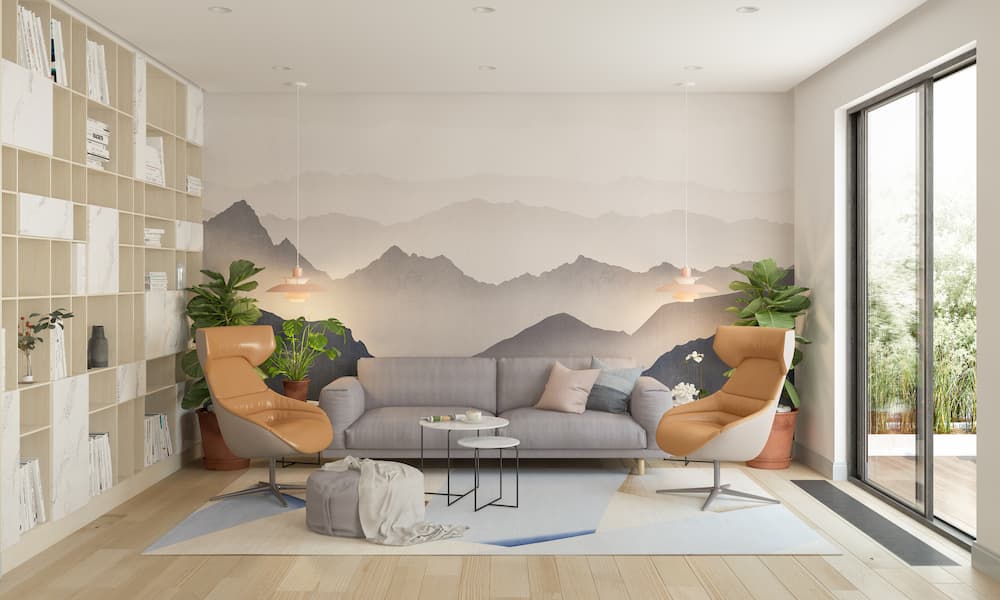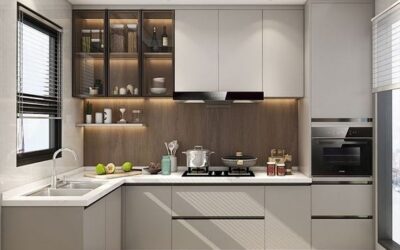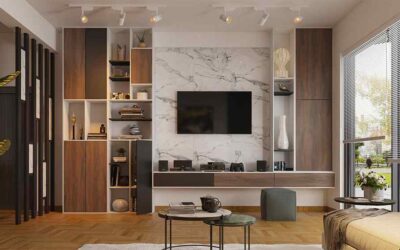Wallpapers are decorative materials used to cover and adorn interior walls. They are typically applied to the surface of walls to enhance the aesthetic appeal of a room. Wallpapers come in a variety of designs, patterns, textures, and colors, allowing individuals to personalize and style their living spaces. They can be made from paper, fabric, vinyl, or other materials and are often sold in rolls for easy installation.
Key features of wallpapers include:
- Design Variety: Wallpapers offer an extensive range of design options, including floral patterns, geometric shapes, abstract art, scenic landscapes, and more. This variety allows individuals to choose a design that suits their personal taste and complements the overall interior design theme.
- Texture and Material: Wallpapers can have different textures, such as smooth, embossed, or textured surfaces, adding depth and interest to walls. They are commonly made from materials like paper, vinyl, fabric, or a combination of these, each offering unique characteristics.
- Application: Wallpapers are applied to walls using adhesive. The installation process typically involves measuring and cutting the wallpaper to fit the wall dimensions, applying adhesive to the back, and carefully positioning it on the wall. Some modern wallpapers, like peel-and-stick varieties, simplify the installation process.
- Functionality: Besides their decorative function, wallpapers can serve other purposes. For example, some wallpapers are designed to be washable or scrubbable, making them easier to clean. Others may have acoustic properties, contributing to sound absorption in a room.
- Versatility: Wallpapers are versatile in their applications. They can be used to cover an entire room, create an accent wall, or add interest to specific areas like ceilings or niches.
- Durability: The durability of wallpapers depends on the material and quality. Vinyl wallpapers, for instance, are known for their durability and resistance to moisture, making them suitable for areas like kitchens and bathrooms.
- Removability: Many wallpapers are designed to be removable, allowing for easy changes in decor or suitable for temporary applications. Peel-and-stick wallpapers, in particular, can be removed without causing damage to the underlying wall surface.
The ways wallpapers can be used in interior design:
1.Accent Walls:
An accent wall is simply a single wall within a room that’s adorned with a different color, texture, or pattern from the remaining walls. It’s a design technique that draws the eye, defines space, and sets the tone for the entire room.
Focal Point: Use wallpaper to create an accent wall, making it a focal point in the room. Choose a bold pattern or color to draw attention and add visual interest.
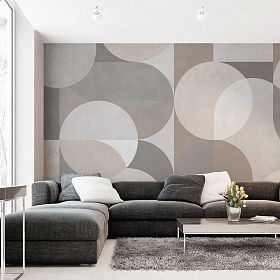
Source: Creativille
2.Patterns and Textures:
Geometric Patterns: Wallpaper with geometric patterns can provide a modern and sleek look to the room.
Floral or Botanical Patterns: Bring nature indoors with wallpapers featuring floral or botanical designs. This can add a sense of freshness and vitality.
Textured Wallpapers: opt for textured wallpapers, such as grass cloth or linen, to add depth and tactile appeal to the walls.
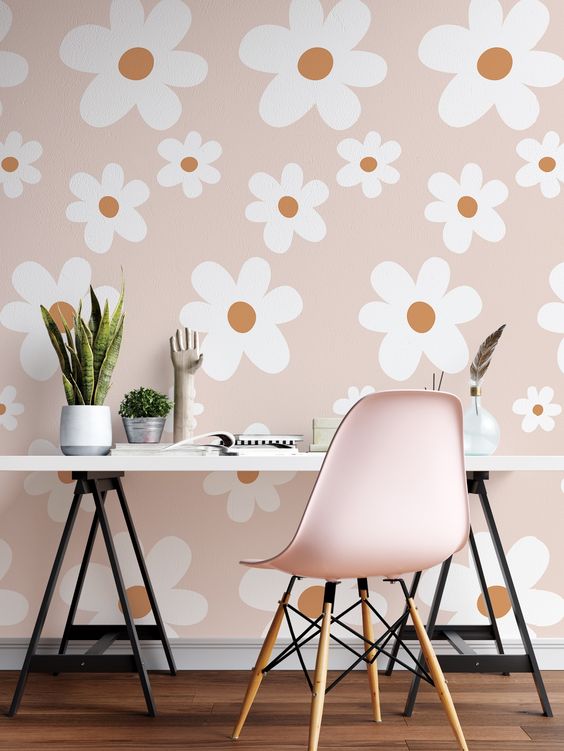
Source: Shein
3.Murals and Artistic Designs:
Wall Murals:
Wall murals are large-scale, often hand-painted or digitally printed artworks that cover and adorn a significant portion of a wall or entire wall surfaces. These murals are designed to make a bold and impactful visual statement, transforming the atmosphere of a space. Wall murals can depict a wide range of subjects, including landscapes, cityscapes, abstract designs, nature scenes, historical themes, and more.
Install wall murals to create a stunning visual impact. Murals can depict landscapes, cityscapes, or abstract art, transforming the wall into a work of art.
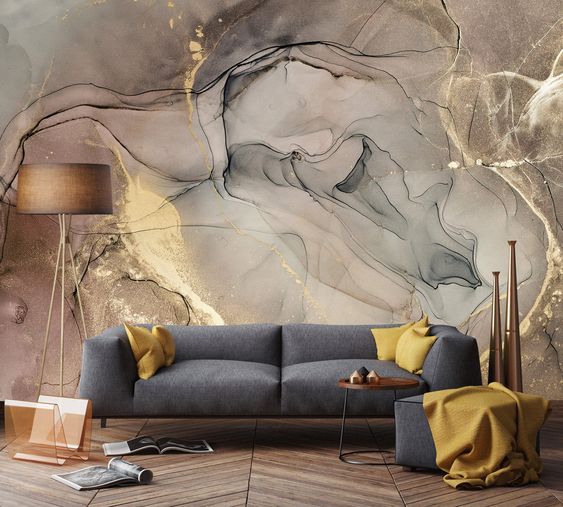
Source: Etsy
4.Period and Vintage Styles:
Vintage style wallpaper is a design choice that draws inspiration from patterns, colors, and motifs popular in past eras, typically from the late 19th century to the mid-20th century. This type of wallpaper is known for its nostalgic charm, bringing a sense of history and character to interior spaces.
Vintage Wallpaper: Use vintage-inspired wallpapers to evoke a specific era or create a nostalgic atmosphere.
Damask or Toile Patterns: These classic patterns can add a touch of sophistication and timeless elegance.
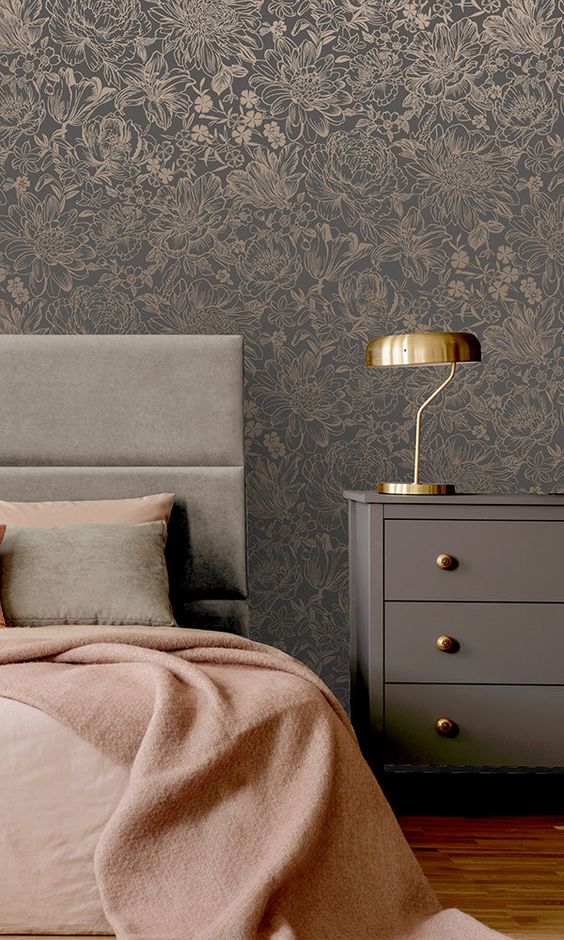
Source: Walls Republic
5.Children’s Rooms:
Designing a children’s room is a delightful and creative endeavor. The right wallpaper can play a pivotal role in creating a playful, imaginative, and comfortable environment.
Cartoon Characters or Themes: Choose wallpapers with cartoon characters, playful patterns, or themed designs for a child’s room.
Glow-in-the-Dark Wallpapers: Add an element of fun with glow-in-the-dark wallpapers that create a magical atmosphere at night.
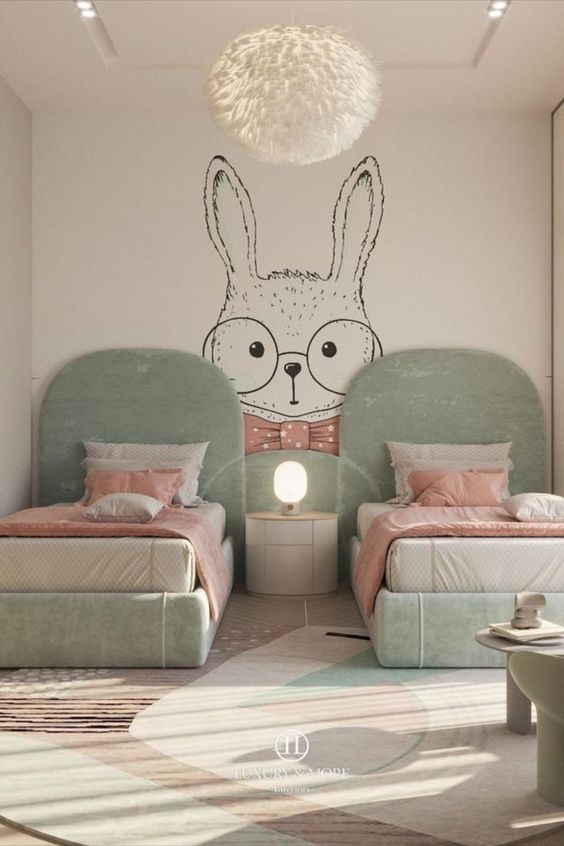
Source: pullcastshop
6.Mood and Atmosphere:
Dark and Moody: Dark and textured wallpapers can create a cozy and intimate atmosphere, especially in bedrooms or dining areas.
Light and Airy: Light- colored wallpapers with subtle patterns contribute to an airy and open feel, suitable for smaller spaces.
7.Temporary and Removable Wallpaper:
Peel-and-Stick Wallpaper: Ideal for renters or those who like to change decor frequently, peel-and-stick wallpapers are easy to apply and remove without damaging the walls.
8.Ceiling Accents:
Ceiling Wallpaper: Extend the wallpaper to the ceiling to add interest and create a cohesive look with the walls.
9.Transition Spaces:
Hallways and Entryways: Use bold or patterned wallpapers in hallways and entryways to make a lasting first impression.
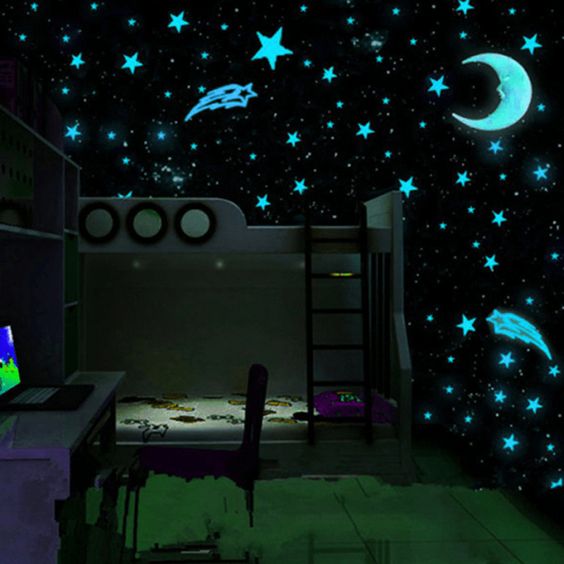
Source: Temu
10.Custom Designs:
Customized Wallpaper: Design custom wallpapers to match specific themes, color schemes, or personal preferences.
11.Mixed Media:
Combination with Other Materials: Combine wallpaper with other materials, such as wood or tile, to create unique and textured wall designs.
12.Texture and 3D Effects:
Embossed or 3D Wallpapers: Choose wallpapers with embossed patterns or 3D effects to add depth and dimension to the walls.
13.Subtle Stripes or Solids:
Striped Wallpaper: Use striped wallpapers to create the illusion of height or width in a room.
Solid Colored Wallpaper: Opt for solid-colored wallpaper to provide a clean and sophisticated backdrop for other decor elements.
14.Functional Wallpapers:
Magnetic or Chalkboard Wallpaper: Combine functionality with aesthetics by using wallpapers that double as magnetic boards or chalkboards.
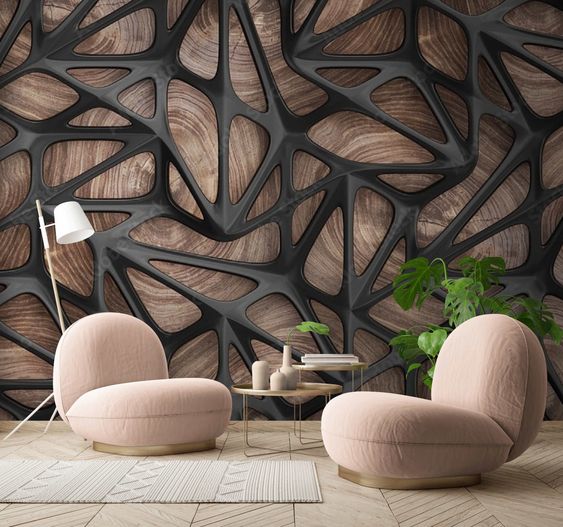
Source: Etsy.com
Advantages of wallpapers in home interiors:
- Aesthetic Appeal:
Wallpapers can add depth, character, and visual interest to a room. They provide an opportunity to introduce patterns, colors, and textures that might be challenging or impractical to achieve with paint alone, creating a more sophisticated and customized look.
- Versatility:
Wallpapers come in a vast array of designs, patterns, and textures, offering endless options for personalizing and enhancing the visual appeal of a room. This versatility allows homeowners to achieve a wide range of styles, from classic and traditional to modern and eclectic.
- Accent Walls:
Wallpaper is commonly used to create accent walls, allowing homeowners to highlight a specific area or architectural feature in a room. An accent wall with a bold or unique wallpaper pattern can serve as a focal point, drawing attention and adding drama to the space.
- Texture and Dimension:
Many wallpapers are designed with textured surfaces, providing a three-dimensional effect that adds depth to walls. This can contribute to a more dynamic and visually appealing environment.
- Covering Imperfections:
Wallpaper can effectively conceal minor imperfections in walls, such as small cracks or uneven surfaces. This can be a practical solution for revitalizing older homes or spaces with less-than-perfect walls.
- Durability:
High-quality wallpapers, especially those made of vinyl or other durable materials, can be more resistant to wear and tear than painted walls. They are often washable or scrubbable, making them easy to clean and maintain.
- Customization:
Custom-designed wallpapers allow homeowners to create unique and personalized spaces. Whether it’s incorporating family photos, favourite quotes, or specific color schemes, custom wallpapers provide an opportunity for creative expression.
- Easy Updates and Changes:
Unlike traditional paint, wallpapers can be easily updated or changed without a significant time or labor investment. Removable wallpapers, in particular, allow for quick and damage-free changes, making them ideal for renters or those who enjoy updating their decor frequently.
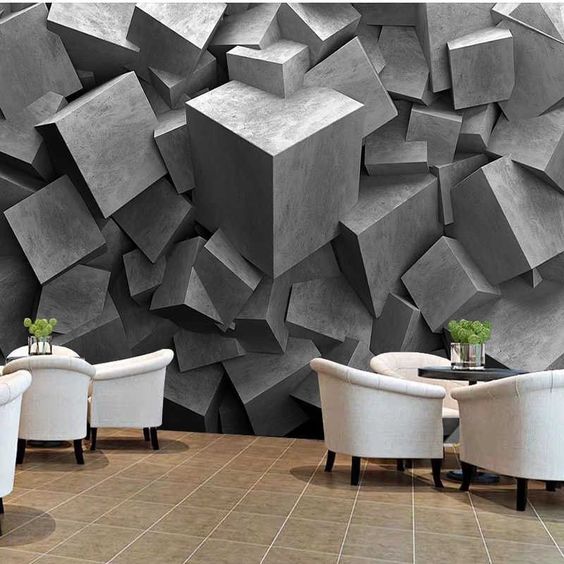
Source: Moon
Conclusion
When incorporating wallpapers into interior design, it’s essential to consider the scale of the pattern, the lighting conditions, and the overall theme of the space. Wallpapers can be a powerful tool for transforming a room and expressing your personal style. Whether used to add a pop of color, create a focal point, or establish a specific theme, wallpapers play a significant role in interior design, allowing individuals to express their creativity and style preferences in their living spaces.
Get Free Design

About Author apurva nagure
You May Also Like…
The Ultimate Guide to Small Modular Kitchen Designs in 2024
A brief overview of Small Modular Kitchen DesignThe space...
Top 10 TV Unit Designs to Enhance Your Home Interiors
Television unit designs have changed in response to changing...

